I think Japan still would have invaded the Soviet Union though, if the Second Sino-Japanese War continued (the oil embargo only really happened once they invaded Indochina).
Other than that I agree with you. That would be curious alternate reality.
N THIS DAY: 19 FEBRUARY 1945
The Battle of Iwo Jima began during WWII 75 years ago between US and Imperial Japanese forces on a tiny, isolated volcanic island in the Pacific Ocean .
Located 650 nautical miles south of Tokyo (1,200 km), Iwo Jima is just eight square miles (21 square km) in size but is part of the Japanese Volcano Islands. It was defended by 22,000 Japanese troops who had built formidable defences. It was targeted by the Americans who committed 110,308 military personnel to the invasion of the island. This included 17 aircraft carriers and 1,170 aircraft.
The invasion of Iwo Jima began at 8.30am on 19 February 1945 after a heavy bombardment but the US Marines encountered extremely stiff resistance on the volcanic beach. The increasingly overcrowded Marines became pinned down from artillery placed on Mount Suribachi as well as Japanese machine guns from inshore pillboxes. The Americans suffered 2,500 casualties on the first day and their efforts concentrated on taking Mount Suribachi, which was achieved on 23 February.
The Battle of Iwo Jima ultimately lasted for five weeks until the whole of the island was captured on 26 March 1945. It was one of the bloodiest clashes of the Pacific War with 20,000 of the 22,000-strong Japanese garrison being killed or declared missing. The Americans suffered 26,000 casualties with 6,821 being killed. The majority of those killed were US Marines who suffered twice as many fatalities on Iwo Jima as had been killed during WWI. 27 Medals of Honor were awarded to Marine and naval personnel, many of them posthumously.
Iwo Jima became one of the most of the famous battles in American military history and the sacrifice of the Marines is commemorated at the Marine Corps War Memorial at Arlington, Virginia.

@Wittmann said in On this day during W.W. 2:
@barnee it is. I checked its operational history though and thought it was first used in late 42 at Leningrad. I don’t think the photo can be from the Demyansk encirclement.
Yes wittman. There was 4 Tiger tanks that saw service on Aug 29 in SE of Leningrad. 3 broke down and all 4 had to be recovered. Then they made more changes to the Tiger designs and then later mass produced them.
@SS-GEN said in On this day during W.W. 2:
@Wittmann said in On this day during W.W. 2:
@barnee it is. I checked its operational history though and thought it was first used in late 42 at Leningrad. I don’t think the photo can be from the Demyansk encirclement.
Yes wittman. There was 4 Tiger tanks that saw service on Aug 29 in SE of Leningrad. 3 broke down and all 4 had to be recovered. Then they made more changes to the Tiger designs and then later mass produced them.
Another way of looking at it is that Tiger tanks – as A&A sculpts – were first deployed in 2012 when A&A 1941 was released. :) Truly a historic moment.
February 19, 1943 North Africa
Rommel launched a surprise counter-attack.
The Axis offensive is renewed with the objective of Le Kef. There are two wings to the assault. The German 15th Panzer Division attacks from Kasserine toward Thala. The 21st Panzer Division, having already advanced beyond Sbeitla, strikes toward Sbiba. The Allied command has anticipated such moves and both mountain passes are well defended,though with fresh inexperienced troops. Among the Axis leadership, Rommel has proposed aiming for Tebessa instead of Le Kef and he has had elements of 10th Panzer Division placed under his command.

February 19, 1943 Third Battle of Kharkov begins!
Originally, Manstein foresaw a three-stage offensive. The first stage encompassed the destruction of the Soviet spearheads, which had over-extended themselves through their offensive. The second stage included the recapture of Kharkov, while the third stage was designed to attack the Soviets at Kursk, in conjunction with Army Group Center—this final stage was ultimately called off due to the advent of the Soviet spring thaw (Rasputitsa) and Army Group Center’s reluctance to participate.
The strength on each side is
Germans: 70.000 personnel
Soviets: 346.000 personnel
On 19 February, Hausser’s SS Panzer Corps was ordered to strike southwards, to provide a screen for the 4th Panzer Army’s attack. Simultaneously, Army Detachment Hollidt was ordered to contain the continuing Soviet efforts to break through German lines. The 1st Panzer Army was ordered to drive north in an attempt to cut off and destroy Popov’s Mobile Group, using accurate intelligence on Soviet strength which allowed the Germans to pick and choose their engagements and bring about tactical numerical superiority. The 1st and 4th Panzer Armies were also ordered to attack the overextended Soviet 6th Army and 1st Guards Army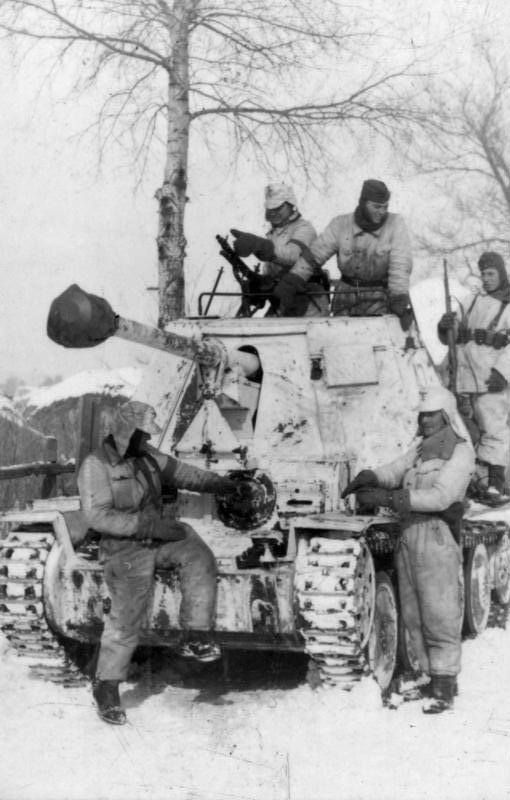
February 21, 1942. Eastern Front
The Red Air Force has landed about 3000 troops inside the pocket south of Vyazma within the past couple of days. The Soviet planes fly through foul weather that the Luftwaffe considers too dangerous. These Soviet troops immediately begin consolidating their position rather than trying to expand it. The German V Panzer Corps in Vyazma watches the Soviets but does not have to do much fighting. Both sides at this time consider themselves to hold the initiative, but, somewhat perversely, neither side is acting on it. While the Germans do have sketchy control of areas all around the new Soviet arrivals, they know that the Red Army could punch through back to the East if they want to.
After considering a request for a withdrawal by Fourth Army for several days, the German Army Command (OKH) tells Fourth Army commander General Heinrici that he can begin building a fall back position on the Ugra River. However, OKH still refuses to approve giving up Yukhnov, which is the entire point of the exercise. That must await final approval from Hitler, and nobody wants to ask him. Given the unexpectedly unaggressive behaviour of the Soviet paratroopers south of Vyazma, the Germans have the luxury of a long period of deliberation about this.
Source: worldwartwodaily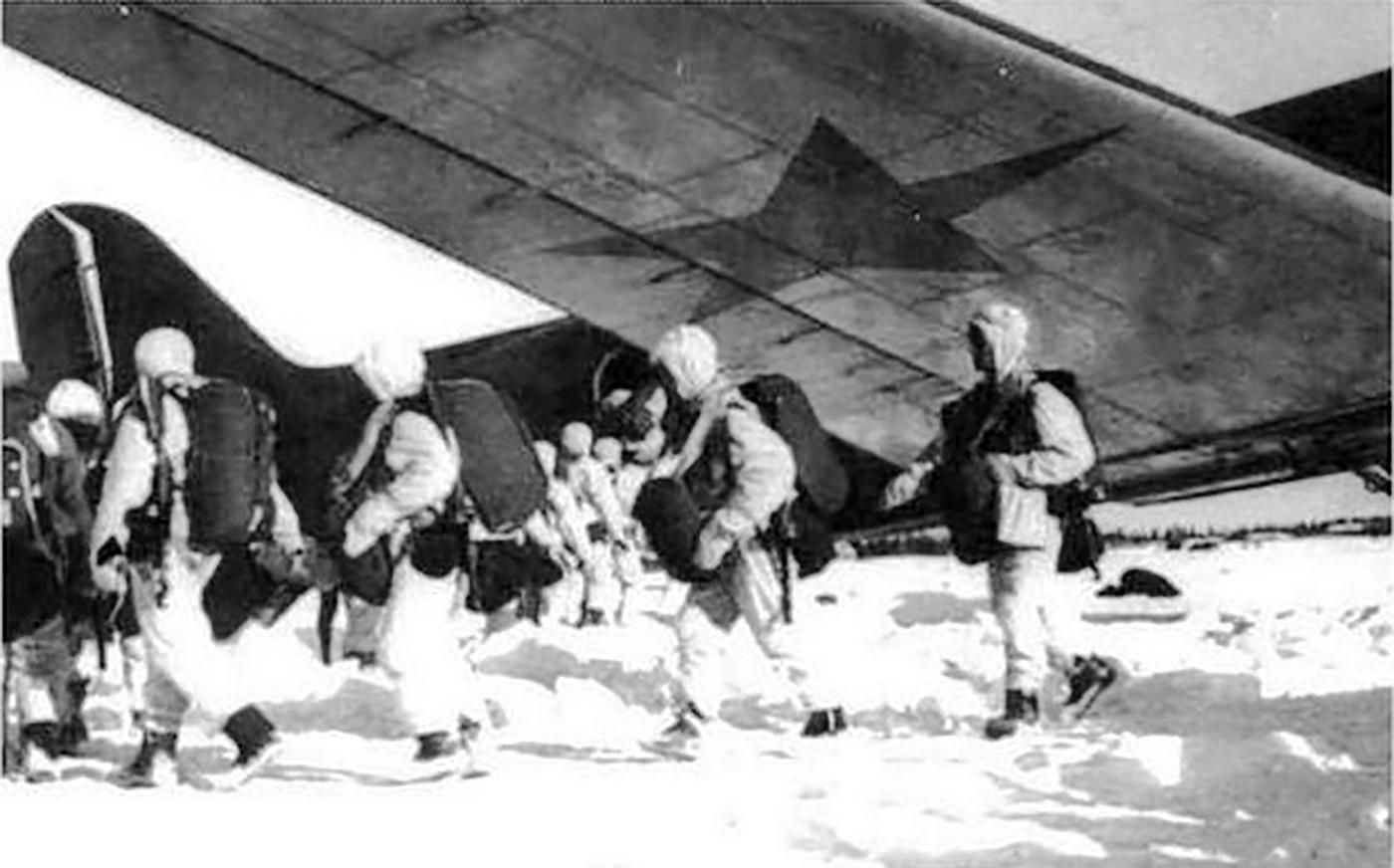
February 22, 1942. Eastern Front
Adolf Hitler institutes a new practice by designating the Demyansk pocket a “fortress” (Festung). This makes the position there sound deliberate rather than unplanned and connotes a pleasing sense of permanence. He talks with the leaders of his army high command, OKH, about ways to restore contact with the large force at Demyansk. The troops outside the pocket, however, are busy holding their own lines, while the trapped German forces are barely surviving on less than half of the daily supplies they require from the Luftwaffe airlift. It will take a massive build-up nearby for the Germans to be able to stage a successful relief operation across the gap.
Photo: SdKfz 10/4 Demyansk Pocket 1942
Source: worldwartwodaily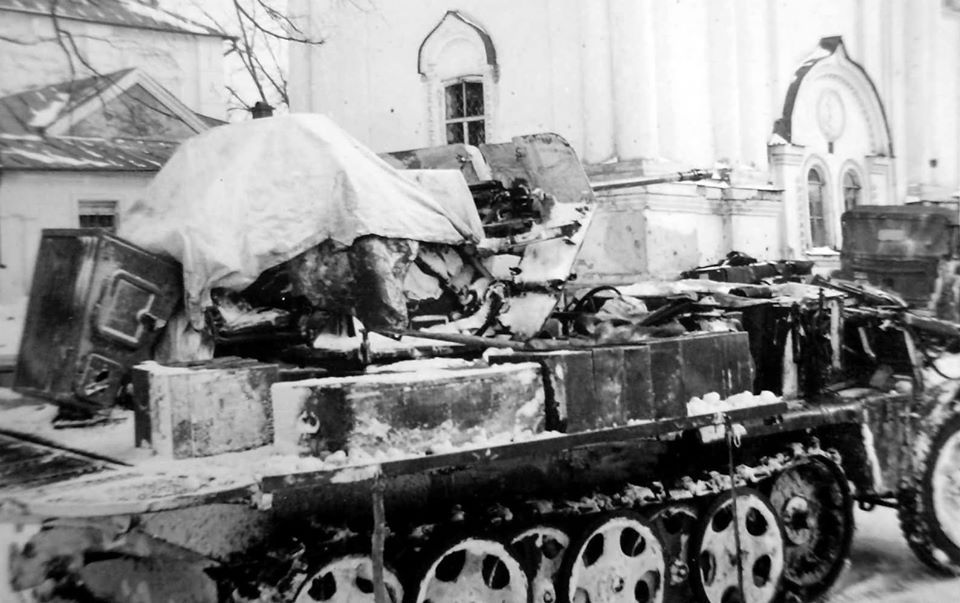
February 23, 1945 Iwo Jima.
The moment after the famous photograph was taken.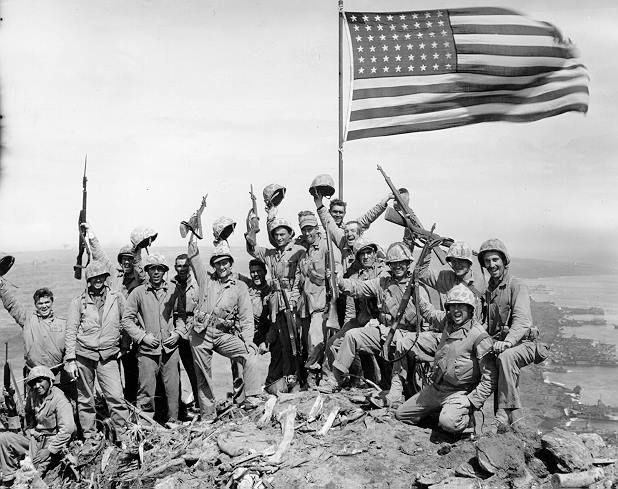
@captainwalker said in On this day during W.W. 2:
February 22, 1942. Eastern Front
Adolf Hitler institutes a new practice by designating the Demyansk pocket a “fortress” (Festung). This makes the position there sound deliberate rather than unplanned and connotes a pleasing sense of permanence.
This could be viewed as a case of using inflated rhetoric and wishful thinking to compensate for a desperate situation on the ground. A similar thing happened in June 1940, when the Germans were sweeping through France: overwhelmed French generals repeatedly drew “halt lines” on their maps, only to find out that the Germans had already passed them.
February 24 1945.
M4A3 (76)‘Sherman’ of the 771st Tank Battalion, US 84th “Rail -Splitter” Division after the fighting in ruins of the German town of Linnich.
On the right is an ‘HQ’ Dodge WC-52f (with what looks like 9th Armored Div markings on the fender)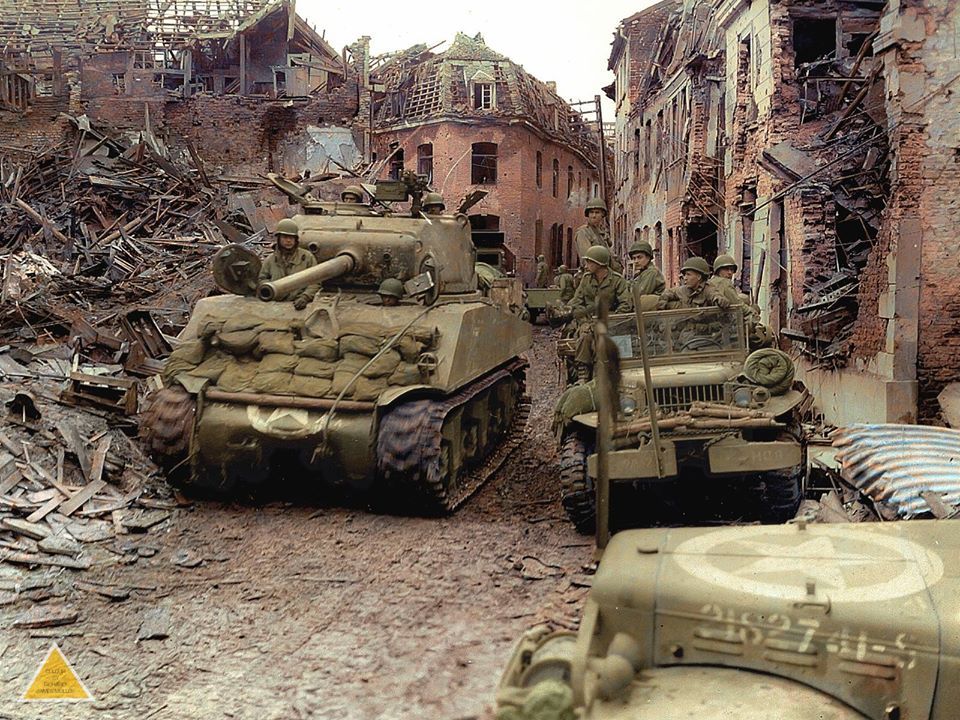
February 26, 1942. Eastern Front
The Red Army has built up an attack force on the Kerch Peninsula, Crimea, to liberate Sevastopol. The Crimean Front force is commanded by Lieutenant General Dmitry Timofeyevich Kozlov and is composed of nine rifle divisions and numerous tank brigades of the 44th, 47th, and 51st Armies. Kozlov has 73,804 soldiers, 1195 guns and mortars, 125 anti-tank guns, 194 tanks, and 200 aircraft. However, while this is an imposing force on paper for such a small 80-square kilometre front, the Red Army units are short of essential supplies like fuel and working weapons. Kozlov requests permission to delay his offensive, but the Stavka orders him to attack on 27 February.
Photo: Three German soldiers in a foxhole who are manning an MG-34 machine gun in front of a knocked-out Soviet T-26 light tank, February 1942.
Source: worldwartwodaily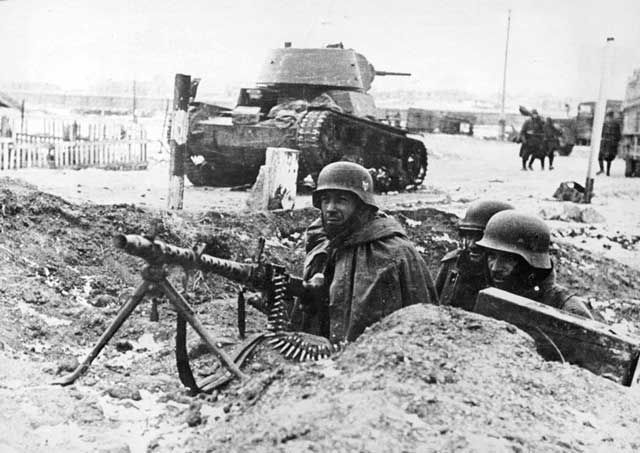
February 27, 1942. Eastern Front
In the Crimea, Soviet Lieutenant General Dmitry Timofeyevich Kozlov launches an offensive along a section of the front at the Parpach Narrows at 06:30. The Red Army has 93,804 troops, 1,195 guns and mortars, 125 anti-tank guns, 194 tanks, and 200 aircraft. The offensive begins with a 230-gun artillery barrage, but the shelling is poorly aimed and does little to disrupt the German defences. The Germans have their 46th and 132nd Infantry Divisions on the 42 Corps front along with the Romanian 18th Infantry Division. The Germans also have Gruppe Hitzfeld in reserve.
The Germans rely on a hedgehog defence of fortified strongpoints at the villages of Tulumchak, Korpech’, and Koi-Asan. They have built strong fortifications all along the front, and they are aided by warmer weather which creates muddy conditions benefiting the defence. The Soviets must advance across a flat, 80-square kilometre plain which exposes them to brutal counter-fire. Soviet tanks, particularly the heavy KV-1s which are slow and make good targets, sink in the mud. Still, the Red Army soldiers take Tulumchak, which is held by the Romanian 18th Infantry Regiment. However, the Germans hold their other two strongpoints at Korpech’ and Koi-Asan after brutal fighting. The Luftwaffe makes 40 Stuka sorties which help to knock out 93 Soviet tanks in total, including 28 KV-1s. The Soviets do make minor gains but suffer heavy losses.
Source: worldwartwodaily
Sweet ! Funny about the pic. I just saw that a few days ago looking for pictures for my task force cards.
February 28, 1942. Eastern Front
The Soviets conclude their airborne landings behind Wehrmacht lines south of Vyazma. The landings are unopposed by the Germans, who often are able to see the Soviet transport planes landing in the distance. Since the Germans control thinly held lines all around this forested area, in essence, the Soviet troops are flying into a pocket. Today, the airborne troops are able to link up with Soviet 50th Army, which also is trapped. The Germans are content to keep these Soviet forces under observation and conclude that the new troops don’t have a clear objective. They focus more on self-protection and securing their supplies rather than making any aggressive moves.
In the Crimea, Lieutenant General Dmitry Timofeyevich Kozlov continues his offensive along the Parpach Narrows. There is bitter fighting, but the Red Army attack loses momentum after advancing five kilometres as two important German strongpoints hold out. Gruppe Hitzfeld from the German 73rd Infantry Division, under the command of Otto Hitzfeld, mounts a counterattack and recovers some ground lost by Romanian troops, retaking Kiet. The Soviets are reorienting their attack to focus on Romanian troops because they prove weaker than nearby German units. This is a Red Army practice that increases throughout the war, with areas held by Romanians easy to identify due to their different and distinctive helmets. The Germans bring up their 170th Infantry Division to secure the Romanian portion of the line in the north.
Source: worldwartwodaily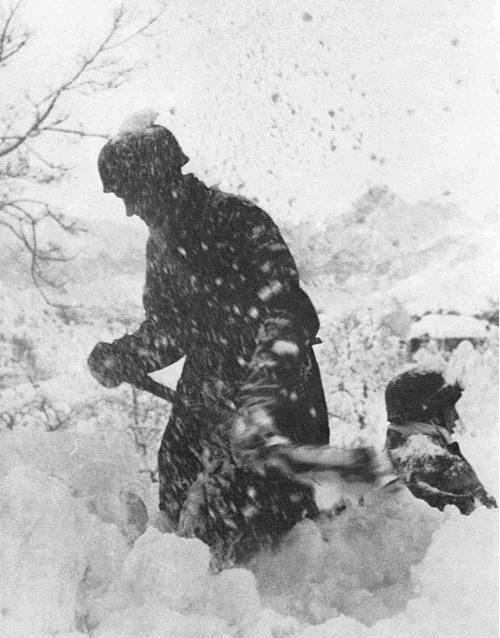
March 1, 1942. Eastern Front
While the front has stabilised following the Soviet counteroffensive in December, the German position remains much shakier than anyone ever expected. General Halder, head of OKH, issues an analysis showing that total casualties are approaching half the number of men that began the campaign. While many of those men are still fighting, the winter was not the respite that the Wehrmacht expected and instead has turned into a struggle to the death. Replacements are not coming close to making up all the losses, and ammunition supplies are becoming an issue as well.
After almost two weeks of indecision about whether to even approach Hitler with the idea of another retreat, today Fourth Army General Heinrici arrives at the Fuhrer headquarters in Rastenburg to plead his case with Hitler. Hitler, however, already is thinking about operations elsewhere to regain the initiative and rescue the trapped units at Kholm and Demyansk and is not concerned about the troops near Moscow. To Heinrici’s (and everyone else’s) astonishment, Hitler immediately grants the withdrawal request. He explains that previously he had been “deliberately obstinate” about retreats, but the front situation has improved so much in recent weeks that he no longer cares exactly where it is. Heinrici returns to headquarters with permission to pull troops back from an exposed position at Yukhnov.
On the Crimea, the Soviet effort along the Parpach Narrows front now is focused on the Romanian forces at the north end of the line. They are the only sector that has given up serious ground. Today, the German 170th Infantry Division moves up and stops this threat, leaving the Red Army in possession of a bulge at the extreme northern end of the line. The Soviets land a small party at Alushta today, but it achieves nothing and quickly re-embarks, while the Soviet Navy bombards Yalta and Feodosiya to little effect. The Soviets already have lost 40 tanks during their offensive and now are achieving little, but they refuse to abandon it. Lieutenant General Dmitry Timofeyevich Kozlov prepares one last attack on the 2nd against the German strongpoint at Koi-Asan.
Source: worldwartwodaily
March 2, 1942. Eastern Front
Lieutenant General Dmitry Timofeyevich Kozlov makes one last attempt to break through the Axis line across the Parpach Narrows on the Crimea. He sends two rifle divisions, three tank brigades and a tank battalion to take the German fortified village of Koi-Asan. The Germans have carefully sited their anti-tank artillery, and along with Stukas, they devastate the advancing Soviet tanks, destroying 93 of them (according to Soviet sources). The Red Army makes no worthwhile gains, and Kozlov must admit defeat. However, his forces have gained a small salient in the north of the line which may provide a possible springboard into the interior of the Crimea in future battles. Stalin approves the cessation of the offensive but demands another one within ten days.
At the Fuhrer Headquarters at Rastenburg, Adolf Hitler continues his unexpected leniency on allowing retreats. He approves a plan by General Schmidt of the Second Panzer Army to pull troops back from Belev in order to consolidate his lines. With the spring thaw (Rasputitsa) coming soon, operations are going to die down anyway.
Source: worldwartwodaily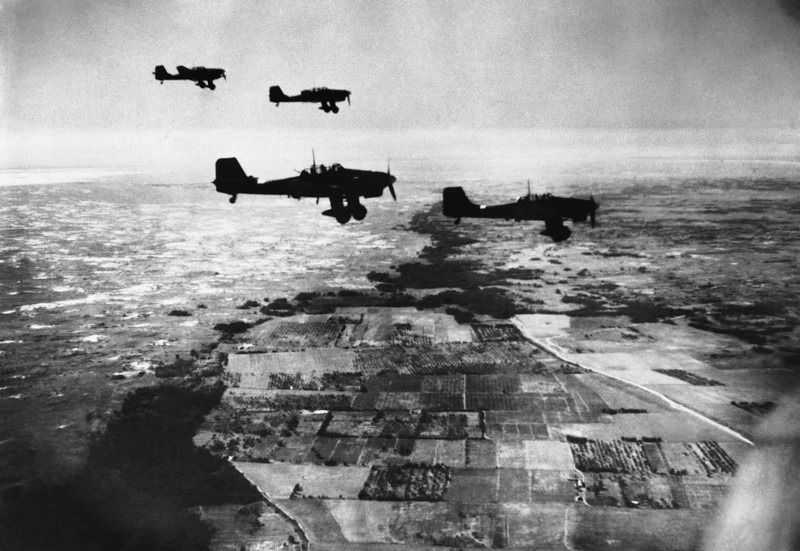
March 3, 1941. North Africa
Rommel moves German 5th Light Division along the Libyan coast road from Sirte to hold a narrow pass 17 miles west of the Allied forward positions at El Agheila. This will block any Allied advances towards Tripoli and serve as a base for offensive operations. Germans also construct defences in the desert to prevent the Allies from bypassing this position.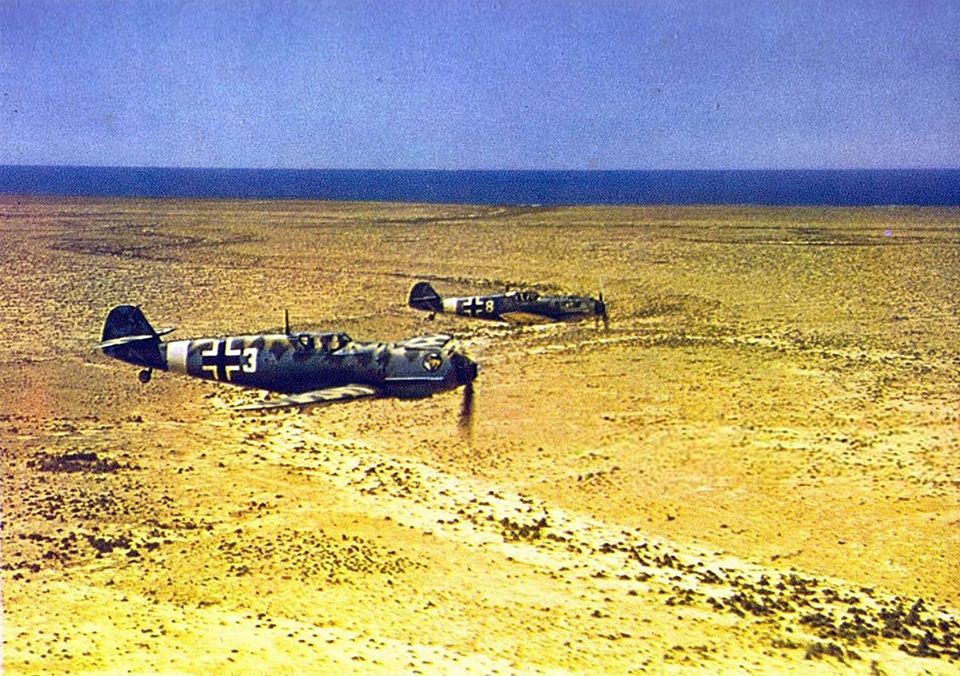
@captainwalker Nice. Nice easy Dog Fight targets !
@SS-GEN said in On this day during W.W. 2:
@captainwalker Nice. Nice easy Dog Fight targets !
Maybe not that easy…if you’re above them they’d be difficult to see.
@captainwalker Yes ! That is cool as hell.